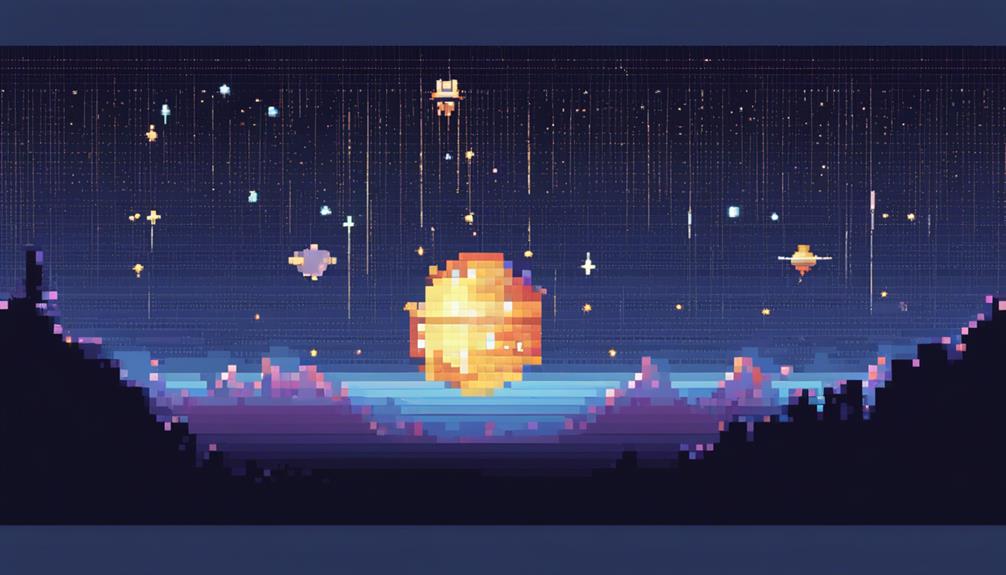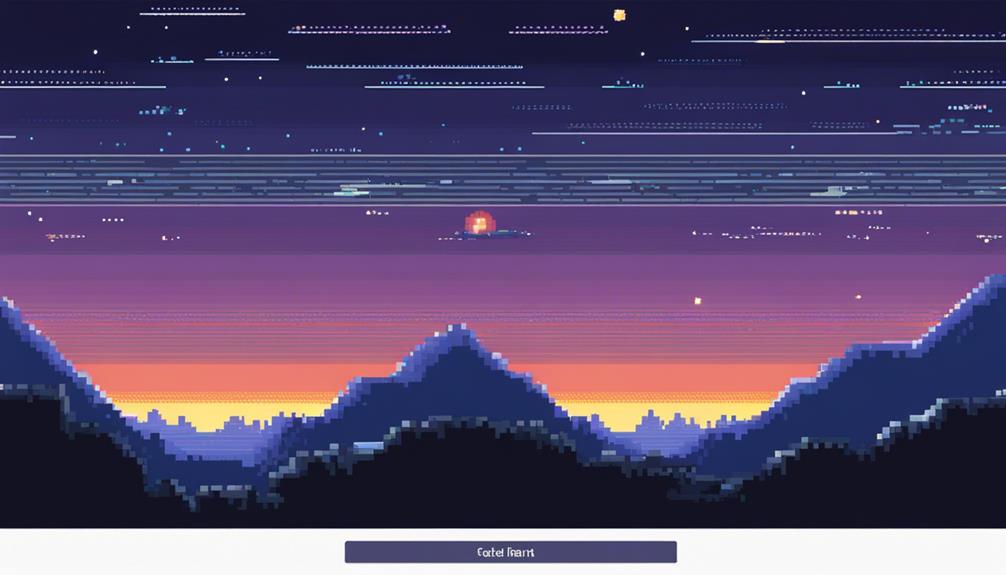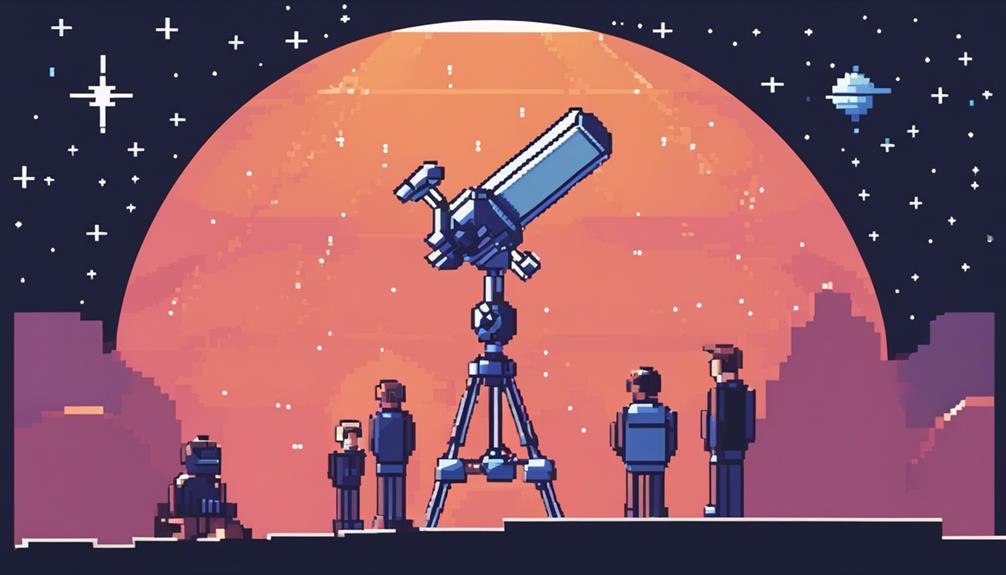The proliferation of satellite constellations, notably exemplified by projects like SpaceX Starlink, has brought to the forefront a pressing concern within the astronomy community. The interference caused by these artificial satellites, particularly in the realms of radio astronomy and optical spectrum observations, has raised significant challenges for ground-based telescopes. As the number and distribution of these satellites continue to increase, efforts are underway to assess their impacts comprehensively. Understanding the intricate dynamics between satellite constellations and astronomical observations is imperative for the future of observational astronomy, prompting the need for collaborative strategies to address these ramifications effectively.
Key Takeaways
- Satellite constellations disrupt astronomical observations, affecting data quality.
- Challenges include interference, data contamination, and streaks in images.
- Collaboration between astronomers and satellite operators is vital for mitigation.
- Occultation events necessitate specific strategies to avoid interruptions in data collection.
Satellite Constellations Overview

Satellite constellations, comprising a substantial portion of the over 5,400 satellites currently encircling Earth, primarily operate within low-Earth orbit, positioned at altitudes less than 1,200 miles above the planet's surface. These constellations, such as SpaceX's Starlink with 3,268 satellites as of December 2022, are strategically designed to enhance global communication, internet access, and other services by facilitating collaboration among satellites. The interconnected nature of these constellations allows for efficient coverage and data transmission worldwide.
However, concerns have been raised regarding the impacts of satellite constellations on astronomical observations. Telescopes on Earth are essential tools for studying the universe, and their observations can be disrupted by satellite trails passing through their field of view. This interference can impede crucial astronomical research, leading to potential data loss and hindering our understanding of the cosmos.
To address these concerns, collaboration between satellite operators and the astronomical community is vital. By working together, solutions can be developed to minimize the negative effects of satellite constellations on astronomical observations. This collaborative effort may involve adjusting satellite orbits, developing mitigation strategies, or implementing technologies to reduce the brightness of satellites during observations. Finding a balance between advancing satellite technology and preserving the integrity of astronomical research is crucial for the future of space exploration and scientific discovery.
Number and Distribution of Satellites
The proliferation of satellites in orbit around Earth, particularly those concentrated in low-Earth orbit within altitudes below 1,200 miles, highlights a significant trend in the space industry's landscape. This trend is driven by the increasing number of satellite constellations being deployed, with a particular focus on the distribution of satellites and their implications for astronomical observations.
Key Points:
- Number of Satellites: Currently, there are over 5,400 satellites orbiting Earth, with a majority of them positioned in low-Earth orbit. More than half of these satellites are owned by U.S. companies or agencies, signifying a significant presence in space operations.
- SpaceX's Starlink: SpaceX's Starlink project stands out in the satellite population, boasting 3,268 satellites as of December 2022. This large number underscores the scale at which satellite constellations are being launched and operated.
- Collaboration and Concerns: Satellite constellations are designed to orbit in coordinated patterns to enable collaboration and maximize coverage. However, concerns have been raised regarding the impact of these constellations on astronomical observations. The increasing density of satellites in low-Earth orbit poses challenges for astronomers, including interference with telescopic observations and light pollution issues that can affect the quality of data gathered from space.
The distribution and sheer quantity of satellites in orbit, particularly within low-Earth orbit, raise important considerations for both the space industry and the field of astronomy, necessitating ongoing discussions and potential mitigation strategies to address these challenges.
Satellite Illumination Effects

With the increasing presence of satellite constellations in low-Earth orbit, the disruptive effects of satellite illumination on astronomical observations have become a significant concern for researchers and observatories. Satellite constellations cause reflections that can significantly disrupt optical and near-infrared telescopes, affecting the quality of observations. Long exposures, crucial for certain types of astronomical studies, may be impacted by up to 3% due to these satellite illumination effects. Wide-field surveys, which play a key role in mapping the sky and studying transient events, are particularly vulnerable, with disruptions affecting a substantial 30-50% of observations.
In the realm of radio astronomy, the interference from strong satellite signals poses a significant challenge as it affects the detection of faint background sources. This interference can obscure or distort the signals from celestial objects, impacting the accuracy of radio astronomical studies. Visual astronomers also face difficulties, with satellite streaks appearing on images and potentially rendering the data unusable. These effects highlight the complex interactions between satellite constellations and various branches of astronomy, necessitating careful consideration and mitigation strategies to preserve the integrity of astronomical observations.
Satellite Magnitude and Brightness
Efforts to quantify the magnitude and brightness of satellite constellations play a crucial role in understanding their impact on ground-based astronomy observations. When considering the brightness of satellites in mega-constellations such as SpaceX's Starlink, several key points come into play:
- Magnitude Estimation: The magnitude of satellites is estimated using standardized astronomical techniques to determine their brightness as seen from Earth. This estimation is crucial in predicting their visibility and potential effects on telescopic astronomical observations.
- Visibility and Impact: The brightness of satellites can hinder ground-based astronomy observations by outshining celestial objects or causing unwanted streaks in telescope images. This interference poses significant challenges to researchers striving for clear and accurate astronomical data.
- Occultations and Collaboration: Occultations by satellites occur when they pass in front of astronomical targets, affecting data collection. To mitigate these disruptions, coordination and collaboration among satellite operators, astronomers, and regulatory bodies are essential. Together, efforts can work towards preserving Dark and Quiet Skies for the advancement of astronomical research while ensuring that satellite mega-constellations coexist harmoniously with ground-based observations.
Specular Flares Impact

Discussing the impact of specular flares from satellite constellations on telescopic observations reveals their negligible effects on astronomical data quality. Astronomers have noted that these flares, while visible in the night sky, do not significantly interfere with the collection of astronomical data. Despite the potential disruptions caused by these bright reflections, astronomers have developed strategies to work around them effectively.
The brightness of specular flares is generally not a major concern for astronomers conducting research. While these flares may be visible in observations, they do not pose a significant threat to the quality of astronomical data being gathered. Astronomers can adjust their observation schedules or angles to minimize any potential interference caused by these flares, ensuring that their data remains accurate and reliable.
Specific strategies can be implemented to mitigate any disruptions caused by specular flares during telescopic observations. By carefully planning observation times and locations, astronomers can avoid the interference caused by these bright reflections. Overall, the impact of specular flares from satellite constellations on astronomical data is considered minimal, with astronomers able to continue their research effectively despite the presence of these reflections in the night sky.
Thermal Infrared Emission
Thermal infrared emission from satellite constellations presents a nuanced impact on astronomical observations. While overall effects are deemed negligible, specific instances may lead to disruptions in research activities. Understanding the intricacies of thermal interference is crucial for mitigating potential challenges in the thermal infrared spectrum.
Disruption of Observations
The impact of satellite constellations on astronomical observations, particularly in the domain of thermal infrared emission, has been extensively studied, revealing minimal disruption to ground-based telescopes.
Key Findings:
- Thermal infrared emissions from satellites have a negligible impact on observations conducted by ground-based telescopes.
- Studies indicate that the thermal emission of satellites does not significantly affect specific observations in the thermal infrared domain.
- Researchers have identified that satellite constellations have minimal impact on thermal infrared observations carried out by telescopes.
These findings suggest that while satellite constellations are a growing presence in the sky, their thermal emissions do not pose a significant challenge to astronomical observations, particularly in the thermal infrared domain.
Interference With Research
In the realm of astronomical research focusing on the thermal infrared domain, the presence of satellite constellations raises concerns regarding potential interference with observations. However, recent studies have shown that the thermal infrared emission from satellite constellations has a negligible impact on telescopic observations within this spectrum. Researchers emphasize that while there may be minimal interference, particularly during specific hours of the night, wide-field and long medium-field exposures could experience some disruption due to satellite thermal emissions. Overall, the consensus is that the thermal emissions from satellites do not significantly compromise astronomical research in the thermal infrared domain. These findings suggest that while considerations must be made, the interference caused by satellite constellations on such observations is deemed to be minimal.
Observation Contamination Risks

Amid the growing presence of satellite constellations in Earth's orbit, the risks of observation contamination in astronomy have become a significant concern. Several challenges have emerged that affect various aspects of astronomical observations:
- Impact on Data Quality: Satellite constellations can introduce bright reflections and streaks in astronomical images, particularly affecting long exposures and wide-field surveys. These artifacts compromise the quality of the data collected by telescopes, leading to potential inaccuracies in research findings.
- Challenges for Radio Astronomy: Radio astronomy, which relies on detecting faint signals from celestial sources, faces interference from strong signals emitted by satellites. This interference can overshadow the desired astronomical signals, hampering the ability of radio astronomers to study the universe effectively.
- Disruption for Visual Astronomers: Visual astronomers capturing images of the night sky also encounter difficulties due to satellite traces appearing in their observations. These traces not only distract from the astronomical objects being studied but can also hinder the analysis and interpretation of collected data.
Efforts to mitigate these risks include avoiding satellite paths during observations and implementing adjustments to telescope operations to minimize disruptions caused by satellite constellations. Such measures are crucial to safeguarding the integrity and accuracy of astronomical research in the face of increasing satellite presence in Earth's orbit.
Specular Flare Interference
Given the minimal impact of specular flares from satellites on telescopic observations, the focus shifts to understanding their negligible interference with ground-based telescopes in astronomical research. Satellite mega-constellations, which have raised concerns about their potential effects on astronomical observations, particularly through light pollution and interference, have shown to have limited impact in this regard. The interference caused by specular flares is considered minimal for astronomical research conducted using ground-based telescopes. Observations are generally unaffected by the presence of satellite specular flares, indicating that specific mitigation efforts are not required to address this type of interference.
To illustrate the negligible effects of specular flares on astronomical observations, the table below provides a comparison of the impact of different types of satellite interference on telescopic observations:
| Type of Interference | Impact on Telescopic Observations |
|---|---|
| Specular Flares | Negligible |
| Light Pollution | Moderate |
| Satellite Trails | Significant |
| Radio Frequency Interference | Variable |
Through this comparison, it is evident that while certain types of satellite interference pose challenges for astronomical research, specular flares are not among them, allowing ground-based telescopes to continue their observations with minimal disruption from satellite mega-constellations.
Satellite Trail Contamination

Satellite trail contamination in astronomical images presents a critical issue due to the interference caused by bright streaks over celestial objects. The movement of satellites across the sky during extended exposure times significantly impacts the quality of data collected by astronomers. Removing these satellite trails poses challenges that affect the accuracy and reliability of observations, particularly in wide-field surveys and deep imaging studies.
Light Pollution Effects
Emanating from the proliferation of satellite constellations are light pollution effects, particularly characterized by satellite trail contamination that detrimentally impacts astronomical observations. This phenomenon contaminates astronomical images by leaving streaks of light across them, disrupting observations and data collection for astronomers. Mitigation strategies involve adjusting telescope operations to avoid satellite trails. The impact of satellite trail contamination is a significant concern for ground-based astronomy due to the interference it causes in capturing clear and accurate data. Astronomers are actively working on solutions to minimize the effects of satellite constellations on observational activities, ensuring that the integrity and quality of ground-based astronomical research are preserved.
Data Collection Challenges
The challenges posed by satellite trail contamination in data collection for ground-based astronomy are significant and multifaceted. Satellite trails can lead to data contamination in telescope images, especially when they intersect with astronomical observations of celestial objects. During long exposures, these satellite streaks can disrupt data collection, making it difficult for astronomers to differentiate between actual astronomical phenomena and satellite interference. Mitigation strategies often involve the use of software filters to eliminate satellite trail contamination from observational data. The table below provides a summary of the key issues related to satellite trail contamination in astronomical observations.
| Challenges | Impacts | Mitigation |
|---|---|---|
| Data contamination | Streaks in images | Software filters |
| Intersection with celestial objects | Difficulty in analysis | Image processing |
| Disruptions in data collection | Confusion in interpretation | Calibration techniques |
Thermal Infrared Observation Issues
In the domain of thermal infrared observations, the impact of satellite constellations is notably minimal. This is primarily due to the following reasons:
- Negligible Effects on Telescopic Observations: Satellites' thermal emissions in the thermal infrared domains have been found to have negligible effects on telescopic observations. The thermal characteristics of satellites do not significantly interfere with the detection and study of thermal emissions from celestial bodies.
- Minimal Affected by Satellite Presence: Observations conducted in the thermal infrared range are minimal affected by the presence of satellites in orbit. The signals from astronomical sources in this domain remain relatively undisturbed by the thermal emissions of satellites, allowing astronomers to continue their research with minimal disruption.
- Uninterrupted Thermal Infrared Observations: The thermal emissions from satellites do not disrupt thermal infrared observations to a significant extent. Despite the growing number of satellites in orbit, the impact on observations in the thermal infrared spectrum remains negligible. This allows astronomers to collect data and study thermal emissions from various sources without substantial interference from satellite constellations.
Occultation Events

Occultation events, such as those caused by satellite passages, can have significant implications for astronomical observations due to the sudden interruptions they create in data collection. These events can lead to abrupt changes in brightness or the temporary masking of celestial objects, impacting the quality and continuity of research efforts. To mitigate these disruptions, astronomers rely on precise orbit data and timing predictions to anticipate and navigate around occultation events, ensuring that observations remain unaffected by satellite interference.
Impact on Observations
Satellite constellations' impact on astronomical observations, specifically through occultation events, demonstrates minimal disruption to ground-based telescopic data collection. Despite concerns, studies indicate that these events have negligible effects on telescopic observations in the visible and infrared domains. The minimal impact of satellite occultations on ground-based telescopes is evident, with satellites passing in front of celestial objects causing only minor disruptions to astronomical data collection. Occultation events by satellites are considered manageable and do not significantly hinder astronomers' ability to conduct their observations. Furthermore, these events are unlikely to have a ruinous effect on the overall quality of astronomical data gathered by ground-based telescopes.
Mitigation Strategies
Mitigation strategies for addressing potential disruptions caused by occultation events involving satellite constellations necessitate careful consideration of timing and duration to minimize impacts on telescope observations in the astronomy field. Occultation events can affect wide-field exposures and long medium-field exposures during specific hours of the night. To mitigate the effect of these events, astronomers must collaborate with satellite operators and employ specific strategies. This collaboration is crucial for minimizing the impact of satellite mega-constellations on astronomical research. By calibrating a simplistic model to understand the effect on various types of telescopic exposures using narrow and wide-field instruments such as the National Science Foundation's Vera and ESO telescopes, astronomers can better prepare for occultation events in both visible and infrared wavelengths.
Mitigation Strategies
To enhance the effectiveness of mitigating disruptions to astronomical observations caused by satellite constellations, satellite operators can implement various measures in satellite design modifications. Some strategies include:
- Antireflective Coatings: Satellite operators can apply antireflective coatings to the surfaces of satellites to reduce their reflectivity and minimize the interference with telescopes. These coatings help in absorbing or diffusing light, making the satellites less visible to ground-based observatories.
- Raising Satellite Orbits: By raising the orbits of satellites within a constellation, operators can decrease their impact on telescopic observations. Higher orbits reduce the satellites' visibility and limit the potential for them to obscure celestial objects during astronomical observations.
- Collaborative Initiatives with Regulatory Bodies: Cooperation between satellite operators and regulatory bodies, such as the International Astronomical Union (IAU) and the Committee on Space Research (CPS), is crucial for developing and implementing effective mitigation strategies. Collaborative initiatives and workshops involving astronomers and industry professionals can facilitate the coordination of efforts to address satellite interference with astronomy. Regulatory bodies play a key role in fostering communication and enforcing guidelines to protect astronomical observations from the impacts of satellite constellations.
Summary and Implications

Efficient management of satellite constellation impacts on astronomical observations necessitates a comprehensive assessment of the current challenges and implications faced by ground-based telescopes. Ground-based observatories are encountering visible disruptions primarily during the first few hours of the night due to the presence of over 26,000 satellites from 18 constellations in space. These interruptions are particularly pronounced during large and long exposures essential for various scientific observations in the field of Astronomy. To mitigate these disruptions, collaborative efforts involving astronomers, satellite companies, and regulators are imperative. Strategies to address these challenges include the need for enhanced coordination to minimize the interference caused by these satellite constellations. Furthermore, recommendations such as addressing light pollution, conducting thorough site testing, and integrating satellite design considerations are crucial to safeguard the integrity of astronomical observations. Continued research and open dialogue among stakeholders are necessary to ensure sustainable and uninterrupted scientific endeavors in the realm of Astronomy amidst the escalating presence of satellite constellations. By implementing these measures, the adverse impact on ground-based telescopic observations can be minimized, fostering the advancement of Science in the field of Astronomy.
Frequently Asked Questions
How Do Satellites Affect Astronomy?
Satellites significantly impact astronomy through light pollution, data interference, and observation disruption. Their presence in the night sky hinders telescope calibration and obstructs astronomical research. The influx of space debris and radio signals further complicates observations. This interference challenges astronomers in studying celestial phenomena like colliding black holes and near-Earth asteroids. Efforts to mitigate these effects are crucial for preserving the integrity of astronomical research.
Why Are Satellite Constellations Important?
Satellite constellations are crucial in advancing space exploration and technology. They enable enhanced data collection for astronomical research and aid in satellite tracking and monitoring. However, concerns arise due to their potential to contribute to sky pollution and radio interference. Efforts to mitigate light pollution and regulate satellite deployments are essential for preserving the integrity of observational studies and preventing collisions in space.
Why Are Satellite Observatories so Important for Astronomy?
Satellite observatories are vital for astronomy due to their unparalleled data collection, research advancements, and observational capabilities. They enable space exploration, enhance imaging technology, and facilitate the study of cosmic phenomena. Through satellite observatories, astronomical discoveries and scientific breakthroughs have been achieved, driving forward astronomical research. Their unique perspective from space offers insights unattainable from Earth, revolutionizing our understanding of the universe.
Do Constellations of Mini Satellites Pose a Threat to Astronomy?
Yes, constellations of mini satellites pose a significant threat to astronomy. Their presence causes light pollution, orbital interference, data contamination, and radio frequency interference. These challenges lead to observational difficulties, tracking issues, and reduced celestial visibility. The impact extends to research quality and the preservation of the natural night sky. Addressing these concerns is crucial to safeguarding the integrity of astronomical observations and advancing scientific knowledge.

